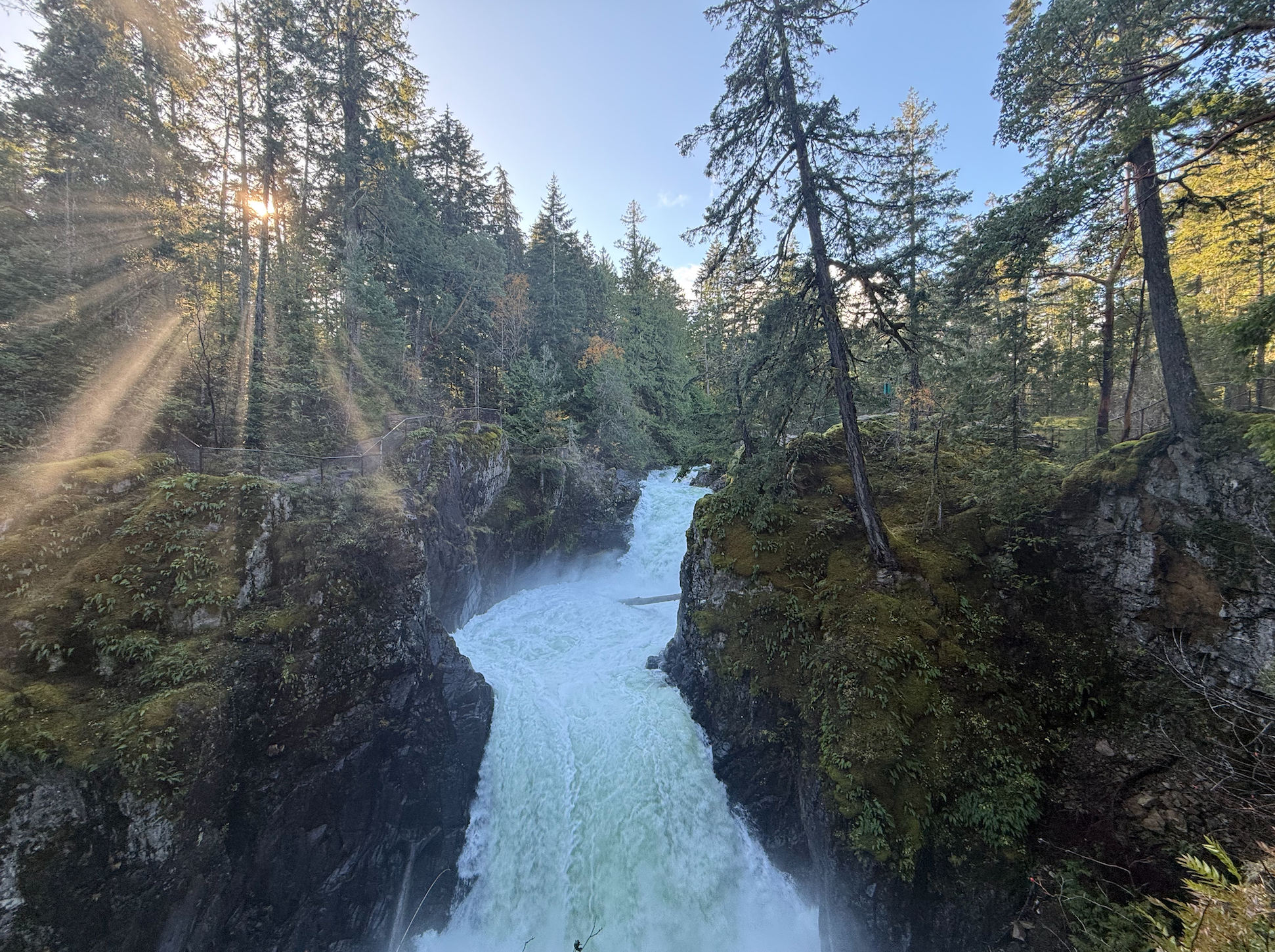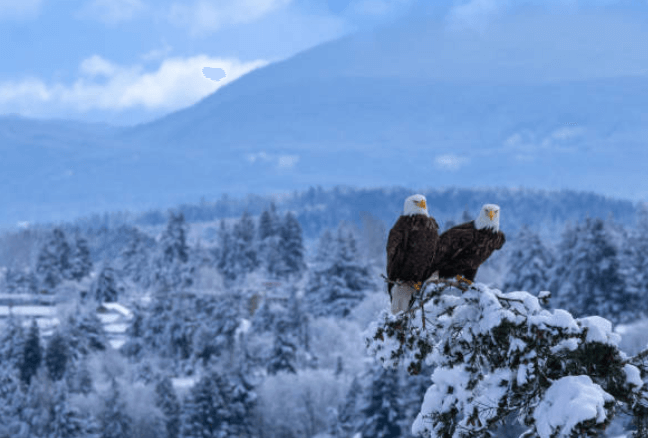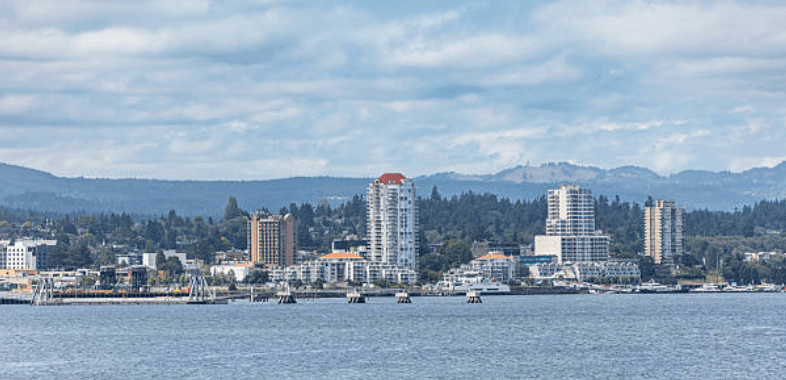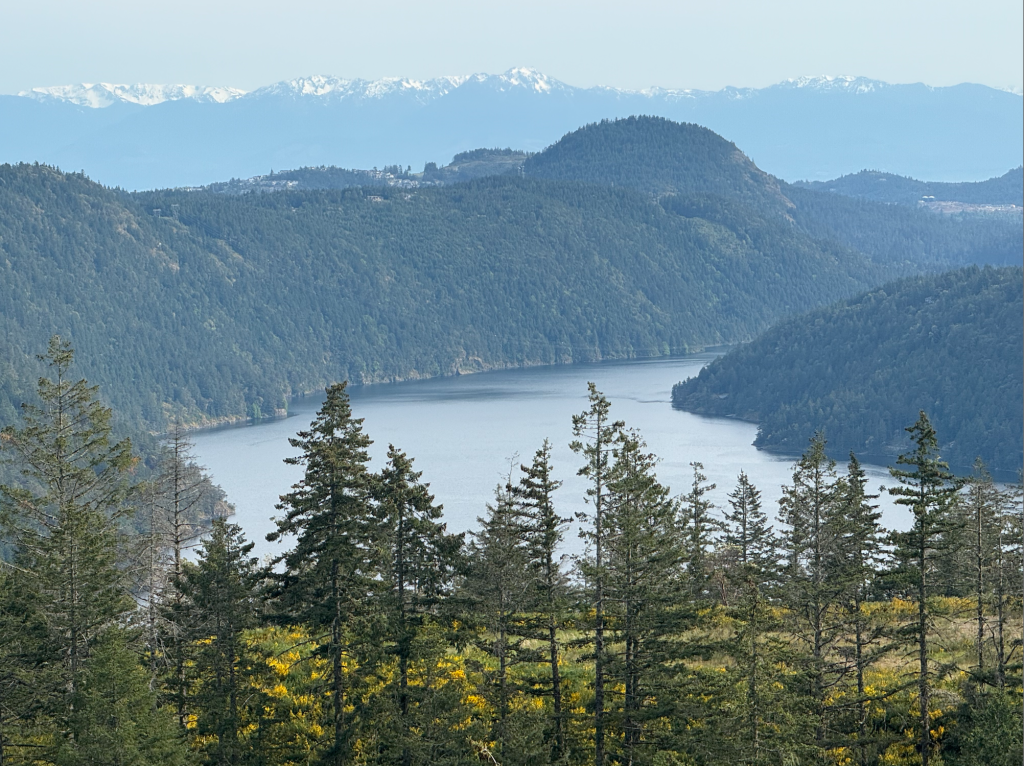If you’re a bird twitcher, this one is for you!
Here’s a detailed exploration of the Pacific Flyway of Vancouver Island and the migrant birds that grace its skies:
—
The Pacific Flyway of Vancouver Island: A Path of Avian Migration
Vancouver Island, nestled in the temperate rainforests of the Pacific Northwest, serves as a vital waypoint along the Pacific Flyway. This migratory route spans from the Arctic tundra to the southernmost reaches of South America, encompassing a vast network of coastal habitats, wetlands, and forests where millions of birds journey annually. Among these migratory pathways, Vancouver Island holds a unique allure, offering critical stopover points and wintering grounds for numerous bird species.
Geography and Habitat
Vancouver Island’s geography plays a pivotal role in its importance within the Pacific Flyway. Stretching over 460 kilometers from north to south, and spanning approximately 32,000 square kilometers, the island is characterized by diverse ecosystems. From the rugged, mountainous terrain of Strathcona Provincial Park in the interior to the expansive coastal rainforests and marshlands, Vancouver Island offers a mosaic of habitats that attract a rich diversity of birdlife.
The coastline is particularly significant, with its fjords, estuaries, and mudflats providing essential feeding and resting areas for migratory birds. The island’s numerous rivers and streams also contribute to its ecological richness, supporting thriving populations of salmon that, in turn, sustain various bird species, such as eagles and gulls, throughout the year.
Seasonal Migration
The rhythm of migration shapes life on Vancouver Island. Twice a year, millions of birds traverse the Pacific Flyway, utilizing the island’s resources as they journey between breeding grounds in the north and wintering grounds in the south. Spring heralds the arrival of songbirds, waterfowl, and shorebirds, which stop to rest and refuel after their long journey across the Pacific Ocean. For many species, Vancouver Island provides crucial breeding grounds where they establish nests and raise their young amidst the island’s verdant forests and protected wetlands.
As summer fades into autumn, the island becomes a bustling crossroads once again as birds begin their southward migration. Shorebirds and waterfowl congregate in preparation for their journey, while raptors, such as bald eagles and peregrine falcons, take advantage of the abundant prey before heading south to milder climates. The autumnal skies over Vancouver Island are marked by the sights and sounds of thousands of birds, a testament to the island’s role as a vital link in the chain of avian migration.
Key Species
The diversity of bird species found on Vancouver Island is staggering. Among the most iconic are the Pacific Brant, a small goose that stops to feed on eelgrass beds along the island’s shores during its migration between Arctic breeding grounds and wintering areas in Baja California. Another notable species is the Western Sandpiper, which gathers in immense flocks on the island’s mudflats, using its long, delicate bill to probe the sediment for tiny invertebrates.
Vancouver Island also hosts a variety of raptors, including the Northern Harrier, a slender hawk that hunts low over open fields, and the Short-eared Owl, which can be seen gliding silently over marshes in search of rodents and small birds. The island’s forests are home to numerous songbirds, such as the Varied Thrush and the Swainson’s Thrush, which arrive in spring to breed and fill the air with their melodic calls.
Conservation Challenges
Despite its natural beauty and ecological importance, Vancouver Island faces numerous conservation challenges. Urbanization, habitat loss, pollution, and climate change threaten the delicate balance of its ecosystems and the bird species that depend on them. Wetland degradation, in particular, poses a significant threat to migratory birds that rely on these areas for feeding and resting during their long journeys.
Efforts are underway to protect and restore key habitats on Vancouver Island, including the creation of wildlife reserves, the establishment of protected areas, and initiatives to promote sustainable land use practices. Community engagement and education play crucial roles in raising awareness about the importance of preserving the island’s natural heritage and ensuring the survival of its migratory bird populations for future generations.
Vancouver Island’s position within the Pacific Flyway makes it a vital link in the chain of avian migration, providing essential habitats and resources for millions of birds each year. From the mist-shrouded forests of the west coast to the sun-drenched shores of the east, the island’s diverse landscapes offer refuge and sustenance to a wealth of migratory species. As we strive to protect and conserve these natural treasures, we also safeguard the intricate tapestry of life that relies on Vancouver Island’s habitats for survival. By understanding and celebrating the significance of the Pacific Flyway and its migrant birds, we can ensure that future generations continue to marvel at the sight of birds in flight over Vancouver Island’s wild and unspoiled landscapes.
Vancouver Island hosts a diverse array of migratory birds throughout the year. Here are twenty notable migratory bird species that you can spot on Vancouver Island:
1. Pacific Brant – Small goose that winters on the island’s coastal estuaries.
2. Western Sandpiper – Small shorebird that stops to feed on mudflats during migration.
3. Bar-tailed Godwit – Long-billed shorebird seen in coastal mudflats and estuaries.
4. Black Oystercatcher – Distinctive black shorebird that nests along rocky shorelines.
5. Sanderling – Small, fast-moving shorebird often seen on sandy beaches.
6. Semipalmated Plover – Small plover with a distinctive black neckband.
7. Red Knot – Medium-sized shorebird known for its long-distance migrations.
8. Marbled Godwit – Large shorebird with a long, slightly upturned bill.
9. Greater Yellowlegs – Tall shorebird with long yellow legs and a distinctive call.
10. Short-billed Dowitcher – Medium-sized shorebird with a long, straight bill.
11. Rufous Hummingbird – Small, vibrant hummingbird that migrates north for the summer.
12. Orange-crowned Warbler – Small songbird with a subtle orange crown that breeds on the island.
13. Townsend’s Warbler – Colorful warbler with yellow cheeks and black markings.
14. Barn Swallow – Distinctive swallow with long tail streamers seen during spring and summer.
15. Tree Swallow – Metallic blue and white swallow often found near water bodies.
16. Purple Martin – Largest North American swallow, often seen in colonies near water.
17. Osprey – Large raptor that migrates to the island in summer to breed.
18. Western Tanager – Brightly colored songbird with yellow body and black wings.
19. Varied Thrush – Robust thrush with a distinctive orange stripe over the eye.
20. Swainson’s Thrush – Medium-sized thrush with a buffy eye ring and beautiful song.
These migratory birds utilize Vancouver Island as a crucial stopover during their migrations, taking advantage of its diverse habitats ranging from coastal estuaries and mudflats to forests and urban green spaces. Each species contributes to the island’s rich avian diversity and offers birdwatchers and nature enthusiasts a rewarding experience throughout the year.
In Nanaimo, located on Vancouver Island in British Columbia, Canada, several species of hummingbirds can be observed. These tiny, colorful birds are a delight to watch as they flit about gardens and feeders. The most common species of hummingbirds in Nanaimo include:
1. Anna’s Hummingbird (Calypte anna):
– Anna’s Hummingbird is a year-round resident in Nanaimo and throughout the Pacific Northwest. It is known for its iridescent green back and head, with males displaying a rosy-red throat (gorget) that can appear black in low light.
2. Rufous Hummingbird (Selasphorus rufus):
– Rufous Hummingbirds migrate through Nanaimo during their spring and fall migrations. They have bright orange-red throats and are slightly smaller than Anna’s Hummingbirds.
3. Calliope Hummingbird (Selasphorus calliope):
– Calliope Hummingbirds are the smallest breeding bird in North America and occasionally pass through Nanaimo during migration. Males have vibrant pinkish-red throats and green heads.
These three species are the most likely hummingbirds to be spotted in Nanaimo, especially in gardens and areas with abundant nectar sources. They are attracted to native plants, feeders with sugar water (1 part white granulated sugar dissolved in 4 parts water), and sometimes even flowering shrubs and trees. Their presence adds a touch of vibrancy to the natural beauty of Nanaimo’s landscapes, making them a favorite among birdwatchers and nature enthusiasts alike.









